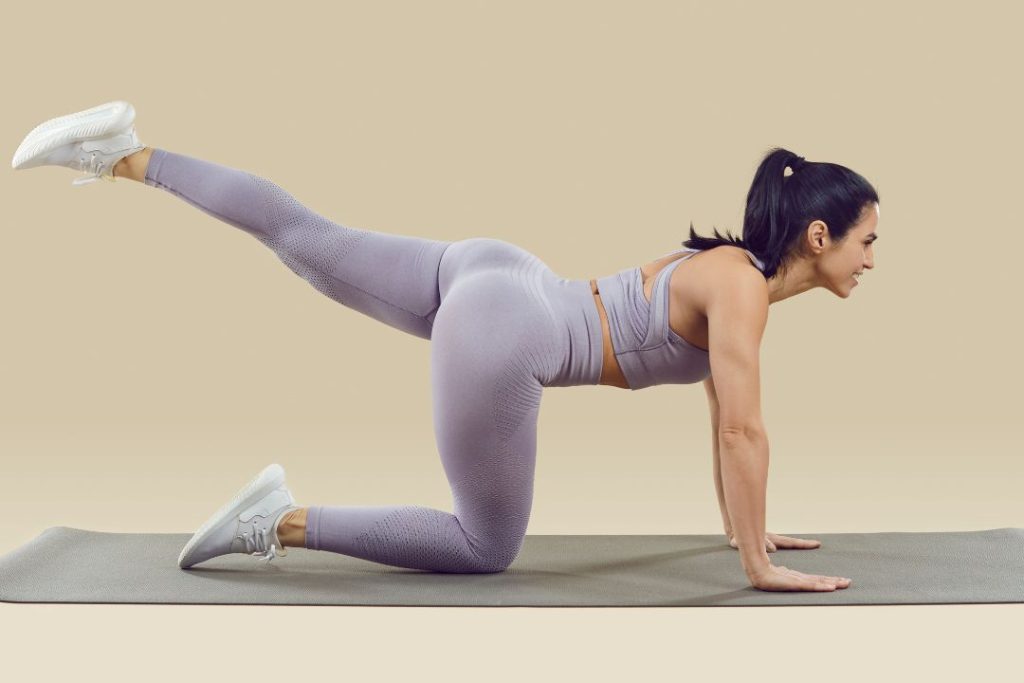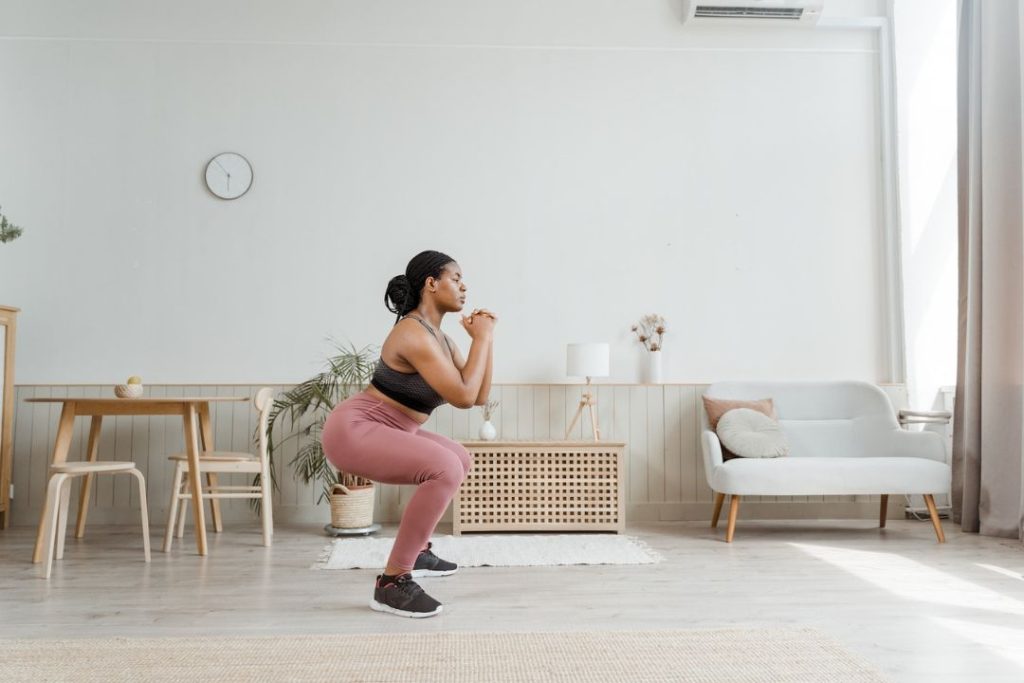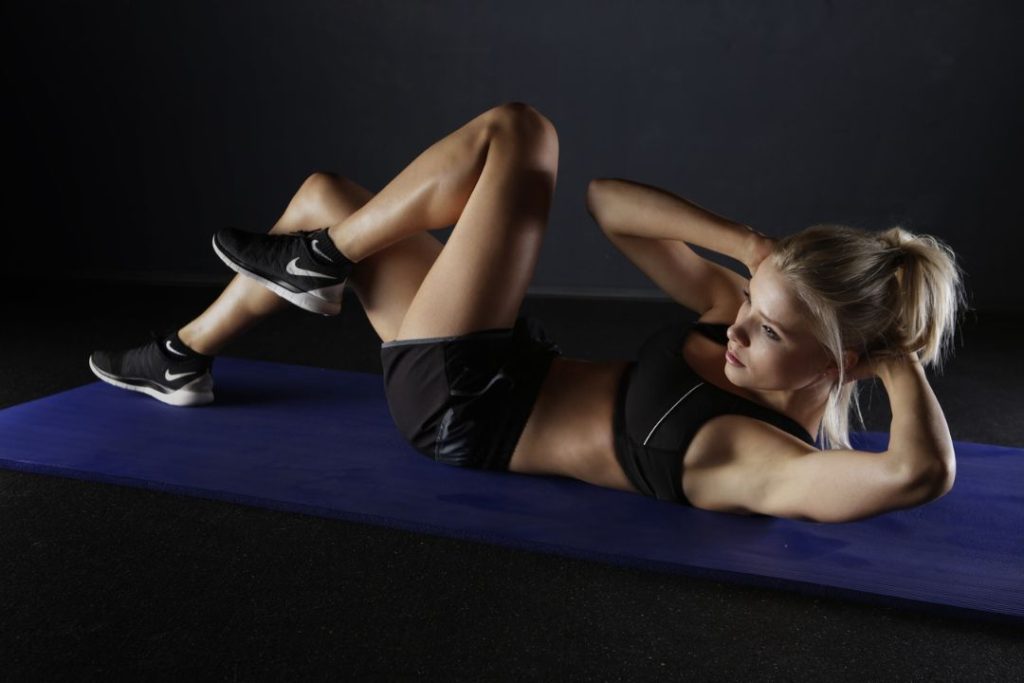How To Do Heel Raises Effectively
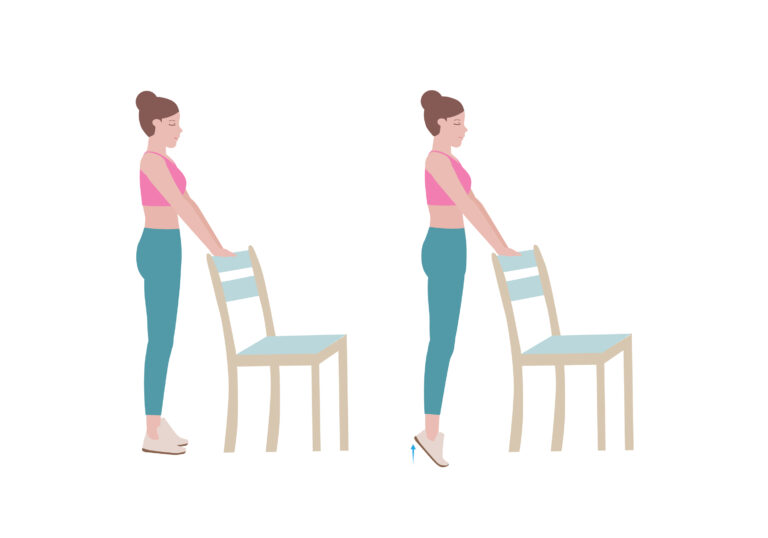
Picture this: You’re standing tall, feeling the burn in your calf muscles as you effortlessly rise up on the balls of your feet, defying gravity with each controlled movement. This simple yet powerful exercise not only strengthens your calves but also helps sculpt your legs and improve overall balance and stability.
Welcome to the world of Heel Raises, where every rise brings you closer to stronger, more toned legs and a newfound sense of confidence in every step you take.
Key Takeaways
Proper Form: Maintain correct body alignment and controlled movements throughout the exercise to maximize effectiveness and reduce the risk of injury.
Range of Motion: Aim to lift your heels as high as possible and lower them until you feel a stretch in your calf muscles.
Vary Foot Positioning: Pointing your toes outward targets the inner calf, while pointing them inward targets the outer calf, allowing for a more comprehensive workout.
Progressive Overload: Gradually increase the resistance or difficulty level over time by adding weights or performing single-leg heel raises to continually challenge and strengthen the calf muscles.
Additional Variations: Explore variations like double heel raises with weights, single-leg heel raises, and weighted single-leg heel raises to diversify your calf training routine and engage different aspects of your calf muscles.
What Is the Heel Raises Exercise?
Heel raises, also known as calf raises, are a great exercise for strengthening and toning the calf muscles.
Heel raises are a convenient and effective method for building muscle in your legs and feet. They can be performed anywhere and used both as a standalone exercise and as part of a larger workout routine. Calf raises involve lifting the heel off the ground. Eccentric heel lifts and drops are performed while seated on a raised surface, extending the heel downwards without touching the floor.
How To Do Heel Raises Effectively
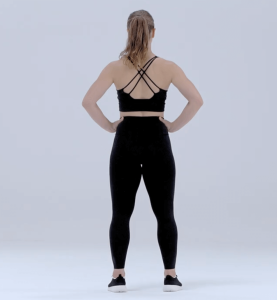
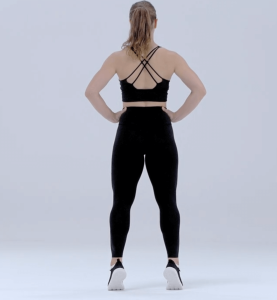
Here’s how to perform heel raises effectively:
Stand with your feet shoulder-width apart and toes pointing forward. You can hold onto a wall or a sturdy object for support if needed.
Slowly rise up onto your tiptoes, lifting your heels off the ground as high as possible.
Hold the raised position for a brief pause, squeezing your calf muscles.
Lower your heels back down to the starting position in a controlled manner.
Repeat the movement for the desired number of repetitions.
Here are some tips to make your heel raises more effective:
Focus on maintaining proper form throughout the exercise, ensuring that your body stays aligned and all your weight and movements are controlled.
Try to maximize the range of motion by lifting your heels as high as possible and lowering them slowly. Raise them until you feel a stretch in your calf muscles.
To increase the intensity, you can perform the exercise on an elevated surface, like a step or a weight plate, which allows for a deeper stretch and a greater range of motion.
Vary your foot positioning big toe, to target different areas of the calf muscles. Pointing your toes outward targets the inner calf, while your foot position and pointing them inward targets the outer calf.
Gradually increase the resistance of one foot by using weights or performing single-leg heel raises.
Sets And Reps
When incorporating heel raise exercises into your workout routine, it’s important to follow a structured approach to ensure effectiveness and safety. Here is a detailed breakdown of the recommended sets and reps for both beginners and advanced individuals:
Beginner Guidelines
Sets: Start with 1 to 2 sets of heel raises. This allows your muscles to adapt to the exercise while minimizing the risk of overloading them.
Repetitions: Begin with 8 to 10 repetitions per set. Focus on performing each repetition with proper form and control to target the calf muscles effectively.
Progression: As you feel more comfortable and confident with the exercise, gradually increase the number of sets and repetitions. Aim to add an extra set or increase the repetitions within the 8 to 10 range before progressing to the advanced guidelines.
Advanced Guidelines
Sets: Progress to 3 sets of heel raises to challenge your muscles further and promote strength gains.
Repetitions: Increase the number of repetitions to 15 to 20 per set. This higher rep range can help improve endurance in the calf muscles.
Progression: Once you can comfortably complete 3 sets of 15 to 20 repetitions, consider adding resistance to the exercise using weights or increasing the difficulty by performing single-leg heel raises.
Recovery
Allow a short recovery break of approximately 2 minutes between sets. This rest period gives your muscles time to partially recover and replenish energy stores, helping maintain performance throughout the workout.
By following these guidelines and progressively challenging yourself over time, you can effectively strengthen your calf muscles, improve endurance, and reduce the risk of injury. Remember to listen to your body, maintain proper form, and consult with a fitness professional if you have any specific concerns or goals related to your calf area or your workout routine.
What Muscles Does Heel Raises Work?
Heel raises primarily target the calf muscles, specifically the medial gastrocnemius, the lateral gastrocnemius, and the soleus. These muscles are responsible for plantar flexion of the whole foot and ankle below, which is the movement of pointing your toes downwards.
Additionally, heel raises also engage secondary muscles such as the muscles around the ankles (stabilizing muscles), quadriceps (front thigh muscles), and glutes (butt muscles) to assist in the stabilization and execution of the movement.
Heel raises can be performed with no equipment, using just your body weight, or you can use a step or an elevated surface to increase the range of motion and difficulty. You can also use the back of a chair or a wall for support if needed.
In terms of calorie burn, heel raises are not typically a high-calorie burning exercise. On average, you may burn around 30 calories in a 10-minute session of heel raises. However, the primary goal of this exercise is to strengthen and tone the calf muscles rather than focusing on calorie expenditure.
Benefits of Heel Raises
This exercise strengthens the muscles in the calves and helps improve ankle strength and stability. Studies also show that it can help place a healthy load on hard surface of your Achilles tendon, which could reverse an unhealthy load on soft surface of the tendon that results from a tendon condition. Be careful not to place too much load on your Achilles tendon too suddenly, especially if you’re in pain. Some of the key benefits of incorporating heel raises into your workout routine include:
Calf Muscle Strength
Heel raises primarily target the calf muscles, helping to strengthen and tone these muscles. Strong calf muscles are essential for activities like running, jumping, and walking.
Improved Balance and Stability
By engaging the muscles around the feet flat ankles and lower legs, heel raises help improve balance and stability. This same heel lift exercise can be particularly beneficial for older adults or athletes looking to enhance their coordination.
Ankle Strength
Heel raises also work the muscles around the ankles, which can help improve ankle strength and reduce the risk of injury, especially for athletes involved in activities that require stability and agility.
Functional Movement
Strong calf muscles are important for everyday movements like walking, climbing stairs, or standing for long periods. Regularly performing heel raises can help improve overall lower body strength and function.
Athletic Performance
For athletes, strong calf muscles can contribute to better performance in sports that involve running, jumping, or quick changes in direction. Building calf strength through heel raises can enhance power and speed.
Injury Prevention
Strengthening the calf muscles and surrounding areas of other foot can help prevent common lower leg injuries, such as shin splints and Achilles tendon issues.
Muscle Definition
Consistently incorporating heel raises right leg, into your workout routine can help sculpt and define the calf muscles, leading to a more aesthetic lower leg appearance.
Overall, heel raises are a versatile exercise that can be easily incorporated into various workout routines to target the lower leg muscles, improve balance, and enhance functional strength for daily activities and athletic performance.
Heel Raise Exercise Progressions
Progressions for the Heel Raise Exercise:
Basic Heel Raises: Start by performing traditional heel raises on a flat surface. Gradually increase the number of repetitions as your calf muscles get stronger.
Single-Leg Heel Raises: Challenge your balance and calf strength by performing heel raises on one leg at a time. This variation of standing heel raise both increases the intensity and engages stabilizing muscles.
Elevated Surface Heel Raises: Place your heels slowly on an elevated surface, such as a step or curb, and perform heel raises. This increases the range of motion of one foot and provides a deeper stretch for the calf muscles.
Weighted Heel Raises: Hold onto dumbbells or wear shoes to add weights or a weighted vest while performing heel raises to add resistance and further enhance muscle growth.
Eccentric Heel Drops: Perform the lowering phase of the heel raise exercise slowly and with control to emphasize the eccentric (lengthening) phase of the exercise progression the calf muscles. This can help improve muscle strength and control.
Pulse Reps: Add pulse reps at the top of the movement to intensify the contraction of the calf muscles. Pulse up and then slowly lower and down slightly before fully extending the ankles.
Explosive Heel Raises: Increase power and speed by performing explosive heel raises where you lift off quickly and slowly lower your heels down slowly. This variation can help improve muscle explosiveness.
Ballet Heel Raises: Perform heel raises with turned-out feet (externally rotated). This variation targets different areas of the calf muscles and adds variety to your routine.
Remember to always focus on proper form, gradually increase the intensity of the exercises, and listen to your body to prevent injury and maximize the benefits of heel raise progressions.
Heel Raises Variations
Mastering the basic heel raise exercise opens up the opportunity to diversify your calf training routine with more challenging variations. Here are some additional variations of the heel raise exercise that you can try:
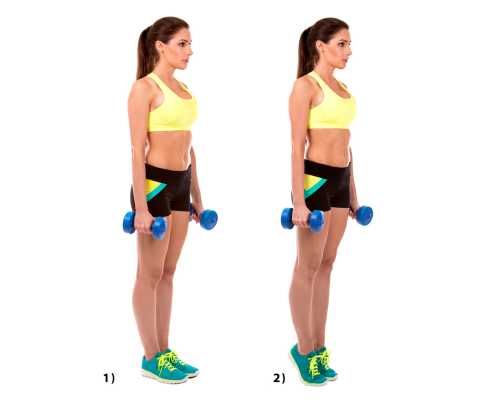
Double Heel Raise with Weights
Hold a dumbbell in each hand or place a barbell across your shoulders.
Perform the double heel raise as usual, but with the added resistance from the weights.
This variation increases the intensity of the exercise, providing a greater challenge for your calf muscles.
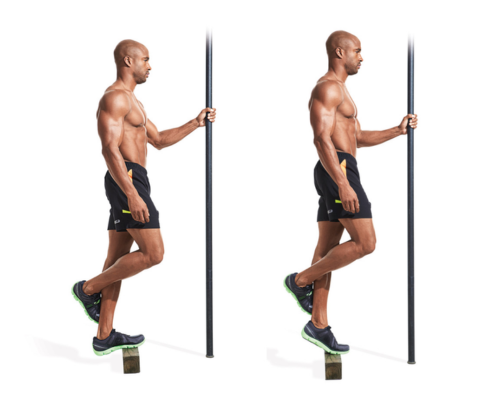
Single-Leg Heel Raise Exercise
Perform the heel raise exercise while balancing on one leg.
Keep the other leg lifted off the ground or slightly bent at the knee for balance support.
This variation helps improve balance, stability, and unilateral strength in each leg.
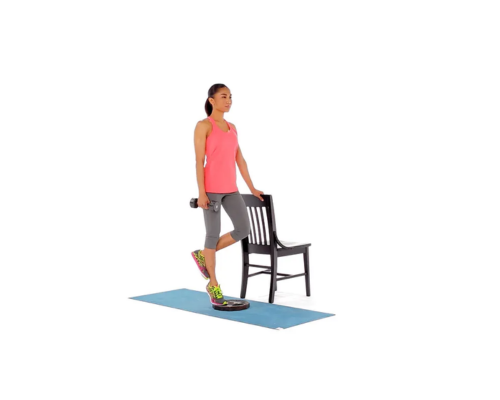
Weighted Single-Leg Heel Raise
Hold a dumbbell in one hand or place a weight plate in the opposite hand to the working leg.
Perform the single-leg heel raise while holding the additional weight.
This variation targets the calf muscles even more intensely on a single leg, further challenging your strength and balance.
When incorporating these variations into your workout routine, make sure to maintain proper form and start with lighter weights to ensure proper execution and reduce the risk of injury. Gradually increase the weight as you become more comfortable with the exercises and feel confident in your strength and stability. These variations can help target your calf muscles from different angles and intensities, leading to greater overall muscle development and functional strength.
Related Leg Exercises
Here are some other lower body exercises that you can incorporate into your workout routine to strengthen and tone your thighs, hips, legs, and glutes:
Leg Raises
Lie on your back with your hands by your side or under your lower back for support.
Lift both legs off the ground while keeping them straight.
Slowly lower them back down without touching the ground and repeat.
Leg raises primarily target your lower abdominal muscles but also engage your hip flexors and thigh muscles.
Flutter Kicks
Lie on your back with your legs extended and arms by your sides.
Alternately raise and lower your legs in a scissor-like motion, keeping them straight.
Engage your core muscles and maintain a controlled movement throughout the exercise.
Flutter kicks work your lower abs, hip flexors, and inner and outer thigh muscles.
Single-Leg Lunge
Stand with your feet hip-width apart.
Take a step forward with one leg and lower your body until both knees are at approximately 90-degree angles.
Keep your front knee aligned with your ankle and your back knee just above the ground.
Push back up and repeat on the other leg.
Single-leg lunges target your quadriceps, hamstrings, glutes, and calves, helping to improve strength and balance.
Lunges
Stand with your feet hip-width apart.
Take a step forward with one leg, lowering your body until both knees are at approximately 90-degree angles.
Keep your front knee aligned with your ankle and your back knee just above or lightly touching the ground.
Push back up using your front leg and repeat on the other leg.
Lunges work your quadriceps, hamstrings, glutes, and calf muscles, providing a comprehensive lower body workout.
Remember to start with lighter weights or bodyweight and gradually increase intensity as you gain strength and confidence in your form. Include these exercises in your regular workout routine, alternating between them for variety and targeting different muscle groups within your lower body. It’s always important to listen to your body and modify any exercise as needed to avoid injury.
Heel Raises FAQs
Heel raises are good for strengthening the calves, improving balance and stability, enhancing the lower leg muscle activity and definition, aiding in sports and activities, and preventing injuries.
Yes, a heel raise is the same as a calf raise. Both terms refer to the exercise where you rise up on the balls of your feet, lifting your heels off the ground to engage and work your calf muscles. The terms “heel raise” and “calf raise” are often used interchangeably to describe this exercise.
For beginners, aim to start with 10-15 heel raises per set and gradually increase as you build strength.
Heel raises primarily target the calf muscles, specifically the gastrocnemius and soleus muscles, rather than the glutes. While heel raises may engage the glutes to some extent for stabilization during the exercise, they are not considered a primary glute-strengthening exercise. If you are looking to specifically target and strengthen your glutes, you may want to incorporate exercises such as squats, lunges, hip thrusts, and glute bridges into your workout routine. These exercises are more effective at engaging and strengthening the glute muscles.
References
Saint Luke’s. Leg and Knee Exercises: Heel Raise. Available at: https://www.saintlukeskc.org/health-library/leg-and-knee-exercises-heel-raise [Accessed 26 Mar 2024].
Margaret Martin. (2023). Heel Raises Exercise Margaret Martin. Available at: https://melioguide.com/weight-bearing/heel-raises-exercise/ [Accessed 26 Mar 2024].
Jason Gray. (2023). Heel Raise Exercise Progressions. Available at: https://myrehabconnection.com/heel-raise-exercise-progressions/ [Accessed 26 Mar 2024].
Popular Workouts
Try these popular workouts that will help you get in shape:
Build your upper booty. Work your legs and booty from all angles with this 15-minute bodyweight workout.
Follow the weekly calisthenics workout plan to improve your fitness. All for beginners as well as intermediate programs.
The Spartacus workout plan can help you improve your physical and mental fitness.

